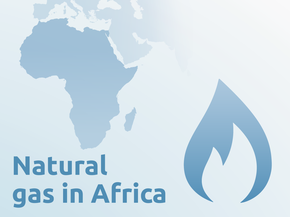Targets
Target Overview
Nigeria submitted its updated NDC in July 2021 (Federal Government of Nigeria, 2021) (Federal Government of Nigeria, 2021). The update included a substantially revised business-as-usual (BAU) projection for 2030, half of what was projected in Nigeria’s first NDC submission.
Nigeria is committed to reducing its emissions by 20% below BAU by 2030 (incl. LULUCF) unconditionally and will reduce its emissions by up to 47% below BAU by 2030, conditional on international support.
The CAT estimates that the unconditional target equates to an emissions level of 368-388 MtCO2e (excl. LULUCF) in 2030 (28-35% above 2010 levels) and the conditional target equates to 244-294 MtCO2e (excl. LULUCF) in 2030 (2% above to 15% below 2010 levels). There is a high degree of uncertainty in these estimates due to a lack of information on projected land sector emissions in 2030, and the extent to which this sector contributes to the NDC target. Due to this uncertainty, we estimate the targets excluding LULUCF using a range of assumptions on the contribution from the land sector (see Assumptions for more details).
Nigeria submitted its Long-Term Low Emission Development Strategy in 2023, setting a net zero GHG target of 2060 (National Climate Change Council, 2023a).
| NIGERIA - Main climate targets |
|---|
| 2030 unconditional NDC target | |||
|---|---|---|---|
| Formulation of target in NDC | 20% below BAU by 2030 | ||
| Absolute emissions level in 2030 excl. LULUCF |
Level of emissions to be achieved at home (domestic target component) 368-388 MtCO2e 28-35% above 2010 |
||
| Status | Submitted on 30 July 2021 | ||
| 2030 conditional NDC target | |||
|---|---|---|---|
| Formulation of target in NDC | 47% below BAU by 2030 | ||
| Absolute emissions level in 2030 excl. LULUCF |
244-294 MtCO2e [2% above to 15% below 2010] |
||
| Status | Submitted on 30 July 2021 | ||
| Net zero & other long-term targets | |||
|---|---|---|---|
| Formulation of target | Nigeria has committed to a net zero GHG target of 2060 | ||
| Absolute emissions level in 2050 excl. LULUCF | N/A* | ||
| Status | Included in the Climate Change Act passed in November 2021 | ||
*For details on what we do for our Optimistic Target global temperature estimate, see the Assumptions tab.
NDC Updates
2030 NDC targets
Nigeria did not increase ambition in its 2021 NDC Update.
| Nigeria - History of 2030 NDC updates | 2017 NDC | 2021 NDC |
|---|---|---|
| 1.5°C Paris Agreement compatible |
|
|
| Stronger target | N/A |
|
| Fixed/absolute target |
|
|
NDC update
In July 2021, Nigeria submitted an updated Nationally Determined Contribution (NDC) that reiterates its unconditional target of 20% below BAU by 2030 submitted in the 2017 NDC and increases the conditional target from 45% to 47% below BAU by 2030 (Federal Government of Nigeria, 2021) (Federal Government of Nigeria, 2021). The update provided revised historical data with a significantly lower BAU, about half the level of the original. The CAT uses these reductions and the revised BAU in its assessment of Nigeria’s NDC.
Nigeria has also expanded the gas coverage of its NDC to include HFCs and proposes to undertake abatement measures in the waste sector, which were not considered in the first NDC.
| 2017 NDC | 2021 NDC update | |
|---|---|---|
| Formulation of target in NDC |
Unconditional target: Unconditionally reduce emissions by 20% below BAU by 2030. Conditional target: Conditionally reduce emissions by 45% below BAU with international support. |
Unconditional target: Unconditionally reduce emissions by 20% below BAU by 2030. Conditional target: Conditionally reduce emissions by 47% with international support. |
| Absolute emissions level in 2030 excl. LULUCF |
Unconditional target: 398 MtCO2e Conditional target: 193 MtCO2e |
Unconditional target: 368-388 MtCO2e Conditional target: 244-294 MtCO2e |
| Emissions compared to 1990 and 2010 excl. LULUCF |
Unconditional target: 38% above 2010 emissions by 2030 Conditional target: 33% below 2010 emissions by 2030 |
Unconditional target: 28-35% above2010 emissions by 2030 Conditional target: 2% above to 15% below 2010 emissions by 2030 |
| CAT rating |
Overall rating*: N/A |
Conditional NDC target against modelled domestic pathways: Almost sufficient Unconditional NDC target against fair share: 1.5°C compatible |
| Sector coverage | Economy-wide | Unchanged |
| Separate target for LULUCF | No | Unchanged |
| Gas coverage | CO2, CH4, N2O | CO2, CH4, N2O, HFCs |
| Target type | Emissions reduction from BAU | Unchanged |
* The CAT began tracking Nigeria in October 2021 after its first NDC update.
Analysis of earlier NDC developments:
CAT rating of targets
Nigeria has put forward two targets in its NDC. One that it aims to achieve using its own resources (unconditional target) and one that requires international support (conditional target). We rate the country’s unconditional target against its fair share contribution and its conditional target against the level of reductions needed according to the modelled domestic pathways. Developing countries like Nigeria will need support to achieve emissions reductions in line with least-cost modelled domestic pathways achieving the 1.5°C long-term temperature goal.
In its 2021 NDC update, Nigeria committed to reducing emissions by 47% below BAU by 2030, conditional on international support. This is equivalent to an emissions level of 2% above to 15% below 2010 levels by 2030, excluding LULUCF. While this is a strong conditional target, Nigeria will need to strengthen its policies to make sure it has the enabling conditions in place to meet the target, in addition to receiving international support.
The “Almost sufficient” rating indicates that Nigeria’s conditional target in 2030 is not yet consistent with modelled domestic pathways limiting warming to 1.5°C but could be, with moderate improvements. If all countries were to follow Nigeria’s approach, warming could be held below—but not well below—2°C.
Nigeria’s conditional target spans the CAT’s “Almost sufficient” and 1.5°C compatible ratings. The large target range is due to uncertainty around the extent to which Nigeria plans to rely on the land sector in meeting its target. Further clarity from Nigeria on this may result in a 1.5°C compatible target.
When the latest version of the modelled domestic pathways (MDPs) were produced in March 2024, they were harmonised to the latest historical data available at the time. Since then, Nigeria has revised their estimate of historical emissions, resulting in a gap in 2019 between the MDPs and historical data. This discrepancy will be addressed in the next update.
In its 2021 NDC update, Nigeria recommitted to unconditionally reducing emissions 20% below BAU by 2030. This is equivalent to an emissions level of 28-35% above 2010 levels (excl. LULUCF) by 2030. The CAT rates Nigeria’s 2030 unconditional target as 1.5°C compatible.
The “1.5°C compatible” rating indicates that Nigeria’s unconditional target is consistent with its fair share of the global mitigation effort to limit warming to 1.5°C. Nigeria’s unconditional target does not require other countries to make comparably deeper reductions or greater effort and is in the most stringent part of its fair share range.
The fair share literature for Nigeria is sparse and some equity categories have few data points. As a result, the upper bound of Nigeria’s fair share range is dominated by a handful of studies. This high range is not reflective of much of the literature, which indicates more stringent emission reductions. Future equity studies may help to improve the fair share analysis for Nigeria.
Further information on how the CAT rates countries (against modelled domestic pathways and fair share) can be found here.
Net zero and other long-term target(s)
In November 2021, Nigeria passed the Climate Change Act that seeks to achieve low greenhouse gas emissions, green and sustainable growth by providing the framework to set a target to reach net zero between 2050 and 2070 (Okereke & Onuigbo, 2021). The Long-Term Low-Emissions Development Strategy, published in 2023, sets a net zero target year of 2060 within the framework of the Act(National Climate Change Council, 2023a). The Act includes provisions to adopt National Climate Change Action Plans in five-year cycles that are meant to ensure national emissions are consistent with a carbon budget (Federal Republic of Nigeria, 2021). However, the government has not met the initial deadlines set in the Act.
The full net zero target analysis can be found here.
Further analysis
Country-related publications
Stay informed
Subscribe to our newsletter

